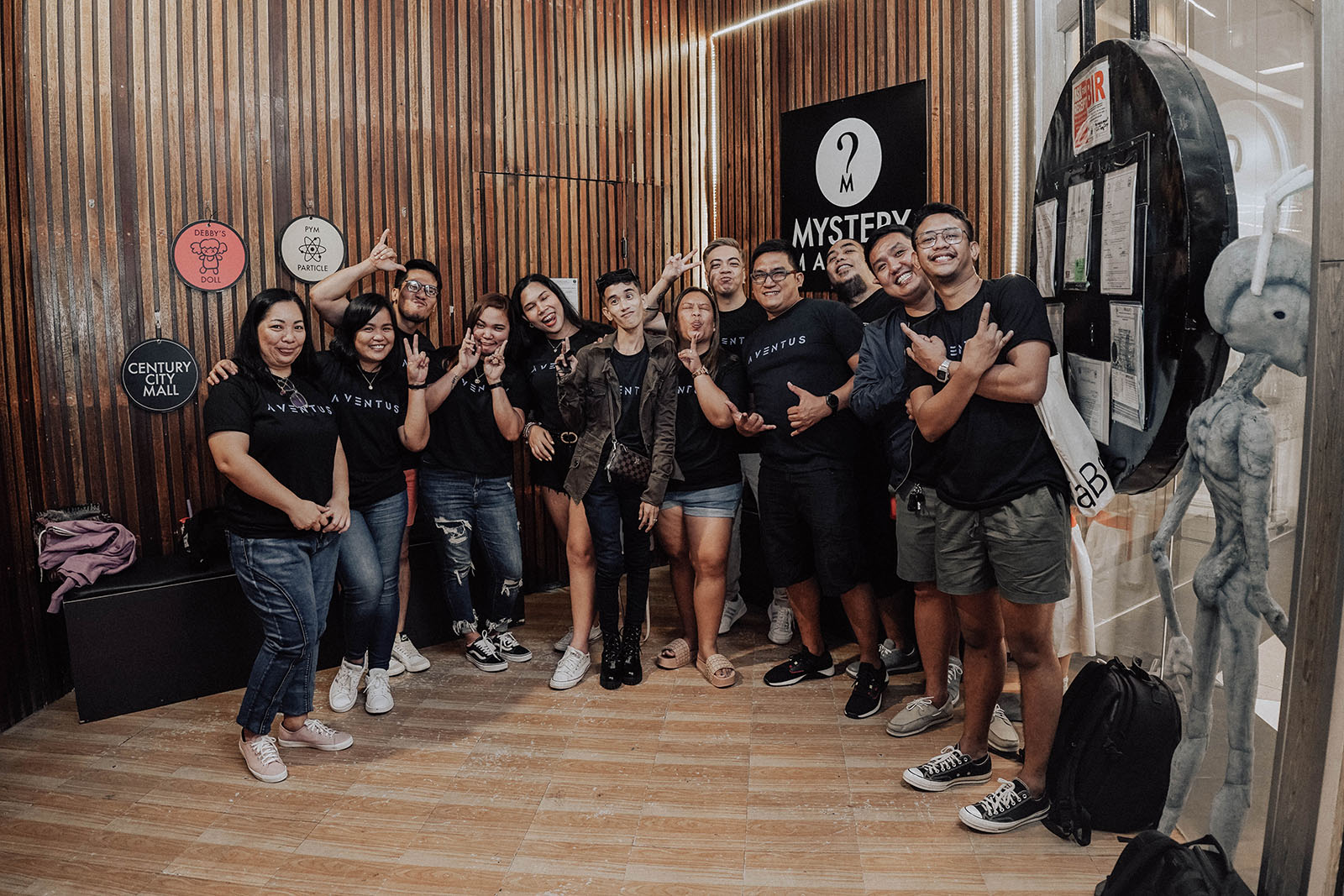How to Make Remote Work... Work
Introduction
During the third weekend of April, we organized a get-together for our people in the Philippines. The event was an incredible experience; the team met in person for the first time to enjoy a meal and drinks, got to know each other, and participated in team-building activities like solving mystery rooms. We want to share a few takeaways with you because we learned a lot about remote work culture from this event and we believe anyone currently working on or interested in building a remote workforce can benefit from these insights.

Advantages and Challenges of Remote Work
Let's think international. From Dominican Republic to Kenya and the Philippines, Aventus' global workforce is composed of team members from very diverse geographies. This perspective allows us to compare and contrast the impact access to remote work continues to have on communities around the world.
Consider Maria’s case, for example. Maria is a Customer Service Representative (CSR) living in a rural area. By working remotely, she can 1) stop commuting to work, drastically reducing transportation expenses while minimizing her exposure to crime, 2) contribute in a significant way to her family’s needs by bringing in a larger income than she could by working locally, and 3) expand her network and horizons thanks to the ability to interact with people from different cultures and backgrounds.
Naturally, these advantages don’t come without their drawbacks, and as most of us are aware, remote work can 1) be isolating and challenging for team members, 2) make efficient time management harder and introduce communication barriers, and 3) blur the lines between home and work, making it harder to achieve a healthy work-life balance.

Helping your team members navigate these challenges can foster a sense of inclusion, improve collaboration and reduce employee turnover. Let’s take a look at three key principles we have picked up after nearly a decade of doing this:
1. Tools can't replicate the richness of physical presence
Yeah, we know. This article is supposed to be about remote and the first idea we throw at you is “have you tried meeting in person?”. Still, it’s worth noting that doing your best to create opportunities for direct connection can do wonders for your team’s cohesion. After our weekend get-together, one of the participants had this to say: “It made us feel acknowledged and appreciated […] it also shows that the company is thinking of our well-being through team building activities.” –Kaey Soluta, Performance Manager.
It was heartwarming to see the event have such a positive effect.

Facilitating face-to-face interactions goes beyond just showing that your company cares about its team members in a holistic way. It strengthens the bonds between them at a personal level. When people know and genuinely like each other, it creates a solid foundation for collaboration and teamwork. The stronger the connection between individuals, the more performant the team will be.
So, while we're all about embracing remote work and leveraging technology to stay connected, we also encourage you to find opportunities for in-person interactions whenever possible. It doesn't have to be a grand event; even small gatherings or casual meet-ups can go a long way in fostering stronger relationships among your team. Remember, happy and connected team members are more motivated, engaged, and ready to tackle any challenge that comes their way.
2. Empower your teams with tools and autonomy
An organization is a machine. By making sure that your team has access to the best communication and project management tools, you are investing in the performance of your machine. Whether it's instant messaging platforms for quick interactions, video conferencing software for virtual meetings, or collaborative project management tools for streamlined coordination, these resources become the gears that facilitate smooth and efficient interoperability within your organization.
When team members have access to quality communication tools, they gain the freedom to express their ideas, share their perspectives, and engage in meaningful discussions. If this capability is paired with autonomy, a culture of open communication is cultivated, fostering innovation and creativity.
In addition to communication, the efficient management of projects is another crucial aspect of optimizing the organizational machine. Project management tools act as the control panel, allowing you to track progress, allocate resources, and monitor timelines with precision. Additionally, integrating these tools empowers individuals to take charge of their assigned tasks, track their progress, and adapt their strategies as needed. With a clear overview of project milestones, deadlines, and resource allocation, team members can self-direct, manage their own workflows, find optimal solutions, and drive projects towards successful outcomes.

By embracing a culture of autonomy alongside the provision of advanced tools, you not only promote individual engagement but also foster a sense of ownership and accountability within your team. When employees feel trusted and empowered to make decisions, they become more invested in their work and take greater responsibility for their contributions. This enhanced sense of involvement not only boosts motivation but also encourages proactive problem-solving and collaboration, as team members are empowered to explore innovative approaches and take initiative in overcoming challenges.
3. Effective Culture = Belonging + Purpose
Organizational culture can be seen as an organic, emergent phenomenon. It is the compound result of every interaction among your people. Each video call, chat message, executive instruction, and official communication contributes to impressing upon your team members what your company stands for and where its priorities lie. Often, it is the implicit content of your messaging that has the strongest effect: do your people feel heard and appreciated or are they being led to believe they are just another cog in the machine? The sum of interactions over time shapes employee identity to a much larger extent than official business role profiles.
Recognizing the importance of every interaction, both formal and informal, is key to shaping a culture that aligns with the desired values and purpose of the organization. When team members consistently feel a sense of belonging, where their voices are valued and their contributions are recognized, they become more engaged and invested in their work. This sense of belonging cultivates an environment of trust, collaboration, and psychological safety, where individuals are comfortable taking risks, sharing ideas, and working towards shared goals. It reinforces the notion that everyone is an integral part of a larger whole, contributing to the collective success of the organization.
Equally essential is instilling a sense of purpose within the organizational culture. Team members want to understand the bigger picture and how their individual contributions contribute to a meaningful and impactful purpose. When employees connect with the purpose of the organization, their work takes on a deeper significance, motivating them to go above and beyond their designated roles. Purpose-driven cultures inspire innovation, perseverance, and resilience, as individuals are driven by a shared vision and a sense of making a difference.
A Remote Company is a Resilient Company
It takes work to get remote work right, and it’s a never-ending process. There are always things to learn and improve—but that’s the case with every company, isn’t it? We’re not saying it’s easy, we’re saying it’s worth it. And it just might be necessary as well; with very uncertain times ahead, every company can greatly benefit from investing in increased nimbleness and agility. You want to be able to turn on a dime, reshape and reskill your workforce, and perhaps even pivot your entire value proposition to effectively respond to the most rapidly changing period in human history.
The way to achieve this, for starters, is to ensure your access to the global workforce. No matter where you are in the world, you’ll be able to choose from a larger variety of people and skills, at higher proficiency levels, and for a lower rate than you would be able to source locally. In addition, geographical distribution of your workforce comes with built-in contingencies against long-tail (low probability) events, such as energy/service outages, natural disasters, etc. There is a long list of benefits to be reaped from remote work; you can even contribute to climate change efforts by eliminating the need to commute for your team!

